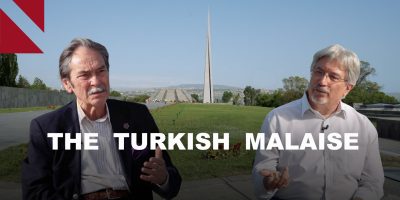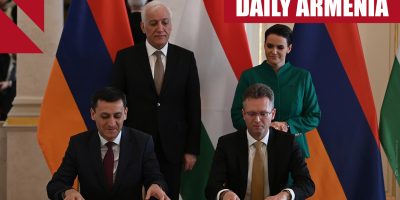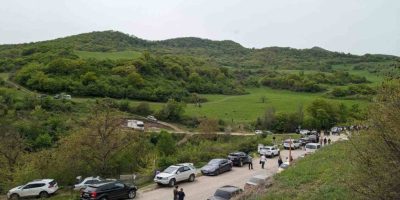By Gegham Baghdasaryan
The 44-day war has turned everything upside down, including our ideas and plans for the relations between Armenia and Artsakh (Karabakh), our logic and philosophy for the settlement of the conflict, and in general, our vision for the future of Artsakh.
Authorities in Armenia and in Artsakh have been quiet about discussions related to the future of Artsakh. Official Yerevan avoids talking about Artsakh’s political status – what is the political goal? Status as an independent state, a semi-autonomous region within Azerbaijan, or something in between – a region with high autonomy, and where Stepanakert and Baku are not in a hierarchical relationship? What is the ultimate desired outcome?
When it becomes impossible to avoid the topic, Prime Minister Nikol Pashinyan focuses on Artsakh’s humanitarian issues or refers to the general right of peoples’ self-determination.
This approach is derived from Russia’s position, which proposes focusing on humanitarian issues and leaving the question of status for the future. Russia believes that an agreement on status cannot be reached now not only because the positions of both Armenians and Azerbaijanis have become more extreme, but also because the current situation is too unstable.
This position, however, is not shared by the two other OSCE Minsk Group co-chair countries – the U.S. and France. They regularly emphasize the importance of Artsakh’s status and the need to resume focused negotiations. The OSCE Minsk Group, comprised of Russia, France, and the U.S., is the negotiating body tasked with finding a solution to the Karabakh conflict.
Each party coming to the negotiations will have their clear vision for developments in the region and an understanding of their interests within that vision. But does the Armenian side also have such a vision? And, to what extent are the interests of Armenians reflected in it? One can only make assumptions about this through statements and comments by various politicians.
For example, during a recent discussion in Armenia’s National Assembly, Vigen Khachatryan, a member of the ruling party’s parliamentary faction, said:
“By not having enough foresight, we refused even the greatest autonomy that Heydar Aliyev promised us. I suppose that Heydar Aliyev’s son, who has no less good advisers, despite saying today that the Karabakh issue no longer exists, will generously agree to some form of autonomy tomorrow. And this handing down of autonomy will be his concession.’’
Khachatryan stressed that this is his personal opinion, and not the government’s position. Nonetheless, during the same discussion, another member of the same ruling faction, Gurgen Arsenyan, expressed the same logic when he said:
“The Republic of Armenia is a recognized entity under international law. Being a recognized entity, it has known geographical coordinates. It is unclear why those geographical coordinates are not accepted by our society. We constantly wish to change those coordinates. But when the coordinates change, so does that recognized entity.”
Another member of the ruling faction, Gagik Melkonyan, answering a reporter’s question about the killing of an Armenian farmer by Azerbiajni forces in Artsakh, said:
“Go to the Russian embassy and ask them why this happened. [Russians] are the security of Karabakh, the Russians are the guarantors of security. We have to ask these questions to the Russians. “
These three remarks present not only the confusion and frustration of the Armenian authorities on the Artsakh issue, but also their inability to develop new approaches and strategies for this new realities. Or, perhaps, there is a lack of desire.
The authorities in Artsakh are also quiet about their plans for the region’s political future and status. They discuss the general mood and make patriotic calls regarding the right and will of the people of Artsakh to live on their land. There is no assessment of what happened. There are no public discussions about the future of Artsakh. As Armenia’s authorities, they also speak solely about humanitarian issues.
The most important issue on the behind-the-scenes agendas of both authorities is the survival of their power. And they do this by finding ways to justify what happened. The rest is negligible.
The parliamentary oppositions in the two Armenian states also cooperate with each other. They have their own separate agenda, which focuses on change of power. In other words, their rise to power. The rest is negligible for them as well. The opposition in both Stepanakert and Yerevan doesn’t show any interest in assessing what happened, formulating a new political discourse, or cooperating with the able and interested groups in Armenia and the Diaspora.
And now we are left with this grim reality – the agendas of both the government and the opposition have very little to do with the national interests of the Armenian people. Moreover, these separate agendas hinder the formation of a single overarching public agenda.
This is where the role of civil society in both Armenia and Artsakh comes into play. Now more than ever, the role of civic initiatives, civic movements will be instrumental for Artsakh’s future. The two societies must be able to find new mechanisms and platforms for self-organization and cooperation. They must initiate a process by which to form a new political agenda and reach a public consensus around it. And then, they must impose this new agenda on the authorities. And those in power will have no choice but either to accept or give way to the driving forces.
The other route is the unconditional acceptance of foreign powers’ agenda, with all its predictable and unpredictable consequences.
Gegham Baghdasaryan is a journalist and the head of Stepanakert Press Club. He is the host of CivilNet’s “Artsakh’s Perspective”. Baghdasaryan was the spokesperson of Artur Mkrtchyan, the first leader of Nagorno Karabakh in the early 1990s.
You can read the this piece in Armenian here.
















